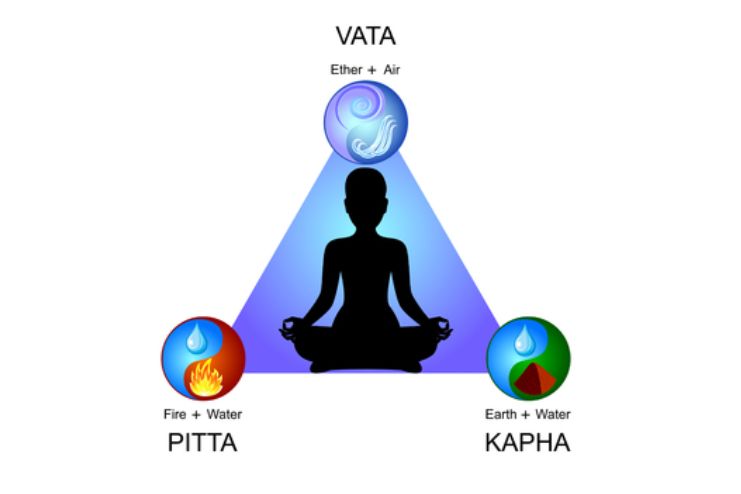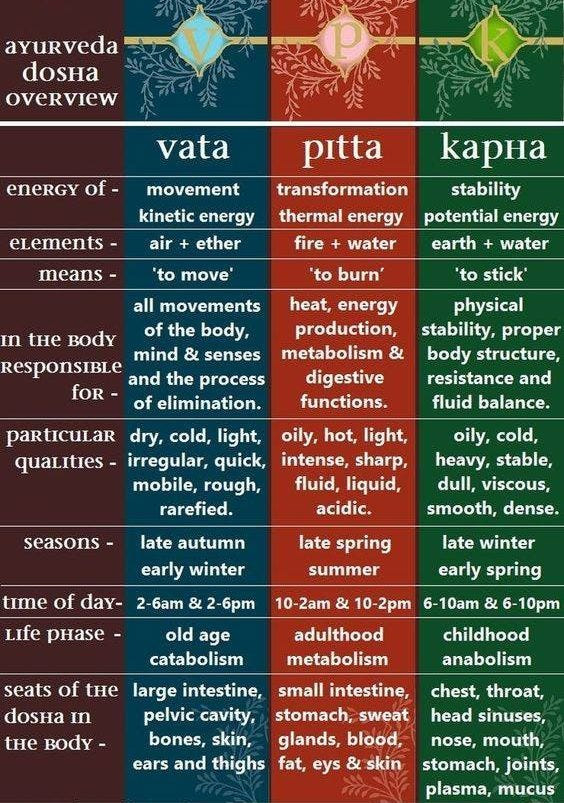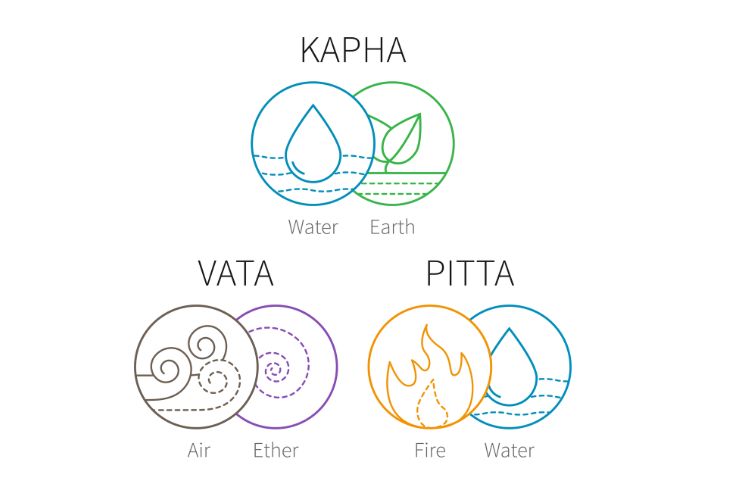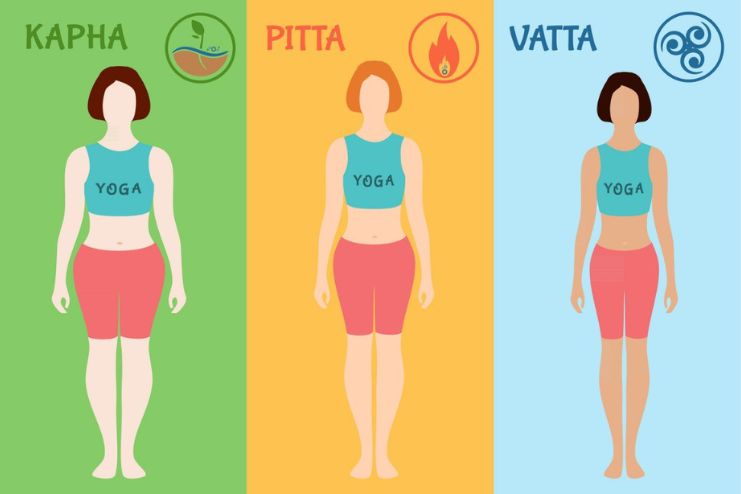Affiliate Disclaimer
Some links in this article are affiliate links. We may earn a small commission if you make a purchase through these links, at no extra cost to you. We only recommend products we find useful to our readersAyurveda, the ancient Indian system of medicine, has been used for thousands of years to achieve optimal health and balance in life. Central to this system is the concept of the three doshas: Vata, Pitta, and Kapha. These doshas are energetic forces that govern all bodily and mental functions, and each person has a unique combination of them.
In this article, we’ll explore what the doshas are, how they influence your health, and how understanding them can help you achieve better physical, mental, and emotional balance. You’ll also discover how dietary and lifestyle adjustments can help you balance your doshas for a more vibrant life.
What are Doshas?

In Ayurveda, doshas are the energies responsible for governing various physical, emotional, and mental functions. They are derived from the five natural elements (panchabhuta): earth (Prithvi), water (jal), fire (agni), air (vayu), and space (ether or akash).
The balance of these five elements within your body creates your prakriti (unique constitution), which influences everything from your metabolism to your emotional temperament.
The Three Doshas:
- Vata (Air + Space): Responsible for movement and flow in the body and mind.
- Pitta (Fire + Water): Governs transformation, including digestion and metabolism.
- Kapha (Earth + Water): Provides stability, structure, and lubrication to the body.
Each person has a unique balance of these doshas, which shapes their physical appearance, personality traits, and health tendencies. Maintaining a balance between the doshas is key to achieving optimal health.
The Influence of Doshas on Health
The doshas govern everything from how your body digests food to your emotional responses. When the doshas are in balance, you experience vibrant health, clarity, and emotional stability. However, when they become imbalanced, they can lead to various health issues.
- Vata Imbalance: May cause dryness, anxiety, and digestive issues like constipation
- Pitta Imbalance: Can lead to inflammation, acidity, irritability, and digestive discomfort
- Kapha Imbalance: May cause weight gain, lethargy, and respiratory issues like congestion

Understanding Vata Dosha: The Energy of Movement
Vata dosha is composed of the elements of air (vayu) and space (akash). It is responsible for all movement and flow within the body and mind. Vata governs functions such as breathing, circulation, nerve impulses, and joint mobility. Additionally, it plays a key role in creativity, flexibility, and enthusiasm.
Symptoms of an Imbalanced Vata Dosha
When Vata is out of balance, it can cause:
- Physical symptoms: Dry skin, constipation, bloating, and muscle stiffness
- Mental symptoms: Anxiety, restlessness, forgetfulness, and insomnia
Causes of Vata Imbalance
- Diet: Excessive consumption of cold, dry, or processed foods
- Lifestyle: Irregular routines, overexertion, or lack of adequate rest
- Weather: Exposure to cold, windy conditions
Strategies to Balance Vata Dosha
To restore balance, opt for vata pacifying foods and implement healthy lifestyle habits:
- Dietary Adjustments:
- Take warm, cooked, and moist foods such as soups, stews, and root vegetables
- Include healthy fats like ghee and olive oil
- Avoid raw, cold, or overly processed foods
- Lifestyle Practices:
- Stick to a consistent daily routine
- Opt for regular mealtimes and sleep schedules
- Practice calming activities like yoga, meditation, and deep breathing
- Use warm clothing and stay hydrated
- Other Remedies:
- Oil massages with sesame or almond oil
- Stay warm with herbal teas like ginger, cinnamon, or chamomile
Nurture Vata dosha, improve energy flow, enhance creativity, and achieve stability and calmness in your daily life.

Pitta Dosha: The Energy of Digestion and Transformation
Pitta dosha is composed of fire (agni) and water (jal). It plays a crucial role in digestion, metabolism, and the regulation of body temperature. Pitta governs the conversion of food into energy, thought processes, and the maintenance of emotional stability. It also contributes to sharp intellect, decisiveness, and focus.
Symptoms of a Pitta Dosha Imbalance
Pitta dosha symptoms include:
- Physical symptoms: Heartburn, acidity, excessive sweating, and inflammation
- Mental symptoms: Irritability, anger, impatience, or a critical mindset
Causes of Pitta Imbalance
- Diet: Excessive consumption of spicy, sour, or oily foods
- Lifestyle: Overworking, exposure to excessive heat, and skipping meals
- Weather: Hot, humid conditions
Strategies to Balance Pitta Dosha
Balancing Pitta is easy with cooling and soothing practices and cooling pitta foods:
- Dietary Adjustments:
- Intake of cooling foods like cucumbers, melons, leafy greens, and coconut water
- Add bitter and sweet flavors like turmeric and fresh fruits to your diet
- Avoid spicy, fried, or overly salty foods
- Lifestyle Practices:
- Practice calming activities like meditation, gentle yoga, and nature walks
- Avoid overexertion and practice relaxation
- Wear breathable clothing
- Take refreshing baths
- Other Remedies:
- Use calming oils like sandalwood or rose
- Sip cooling herbal teas made with mint, fennel, or coriander
Harmonizing Pitta dosha improves digestion, enhances mental clarity, and fosters emotional balance.
Kapha Dosha: The Energy of Stability
Kapha dosha is composed of the elements earth (prithvi) and water (jal). It governs stability, structure, and lubrication in both the body and mind. Kapha plays a crucial role in physical strength, immunity, and emotional balance. When Kapha is in balance, it fosters qualities such as compassion, patience, and resilience.
Symptoms of Kapha Dosha Imbalance
An aggravated Kapha may cause:
- Physical symptoms: Weight gain, lethargy, congestion, or sluggish digestion
- Mental symptoms: Resistance to change, emotional heaviness, or attachment
Causes of Kapha Imbalance
- Diet: Overeating or consuming heavy, oily, and sweet foods
- Lifestyle: Sedentary habits and excessive sleep
- Environment: Cold, damp weather conditions
Strategies to Balance Kapha Dosha
Restore Kapha with kapha dosha diet, and stimulating and lightening approaches:
- Dietary Adjustments:
- Eat light, warm, and dry foods like greens, legumes, ginger, and apples
- Incorporate pungent, bitter, and astringent flavors for balance
- Avoid cold, fried, and overly sweet or salty foods
- Lifestyle Practices:
- Practice energizing activities like cardio workouts or dance
- Wake up early and avoid daytime naps
- Declutter and embrace fresh experiences
- Other Remedies:
- Use eucalyptus or clove oil
- Sip herbal teas with spices like cinnamon or black pepper
Balance Kapha dosha to enhance vitality, maintain a healthy weight, and cultivate a joyful, adaptive outlook on life.
How to Identify Your Dominant Dosha?

Achieve harmony among the tridoshas, Vata, Pitta, and Kapha. This needs an Ayurvedic approach to diet, exercise, and daily habits tailored to your dominant dosha. For this you will need to find out your dominant dosha.
Self-Assessment: Check your body type, digestion, energy levels, and personality traits.
- Vata: Lean build, active mind, creativity, irregular digestion
- Pitta: Medium build, focused, prone to acidity or irritability
- Kapha: Larger build, calm, steady, may struggle with lethargy
Consult an Ayurvedic doctor to find your dominant dosha.
Achieving Mind-Body Harmony Through Ayurveda
Ayurveda offers a holistic approach to health that focuses on balancing the three doshas for overall well-being. By recognizing the unique combination of doshas in your body, you can adopt personalized dietary, lifestyle, and mental practices that enhance your health.
Seasonal adjustments are also key to maintaining balance. Ayurveda recommends tailoring your routine to the changing seasons, which can affect the doshas. For example, during the cold, dry winter months, Vata tends to increase, requiring you to focus on warm, grounding foods and activities.
Ultimately, Ayurveda teaches that achieving dosha balance leads to physical vitality, emotional stability, and mental clarity.
Conclusion
Incorporating Ayurvedic practices into your daily life can help you achieve optimal health and well-being by maintaining a harmonious balance of Vata, Pitta, and Kapha. Whether you’re struggling with physical ailments or emotional turbulence, balancing your doshas can restore vitality and help you lead a more balanced life.
You can achieve lasting health and wellness by identifying your predominant dosha and following dosha-specific guidelines for diet, exercise, and lifestyle.
References
- https://www.healthline.com/nutrition/vata-dosha-pitta-dosha-kapha-dosha
- https://artoflivingretreatcenter.org/blog/get-your-body-back-into-balance
- https://gsayurvedamedicalcollege.com/understanding-doshas-balancing-energy-for-harmony-and-vitality.php
- Lad, V. (2002). The Complete Book of Ayurvedic Home Remedies. Harmony Books.
- Frawley, D. (2000). Ayurveda and the Mind: The Healing of Consciousness. Lotus Press.
In this Article


















